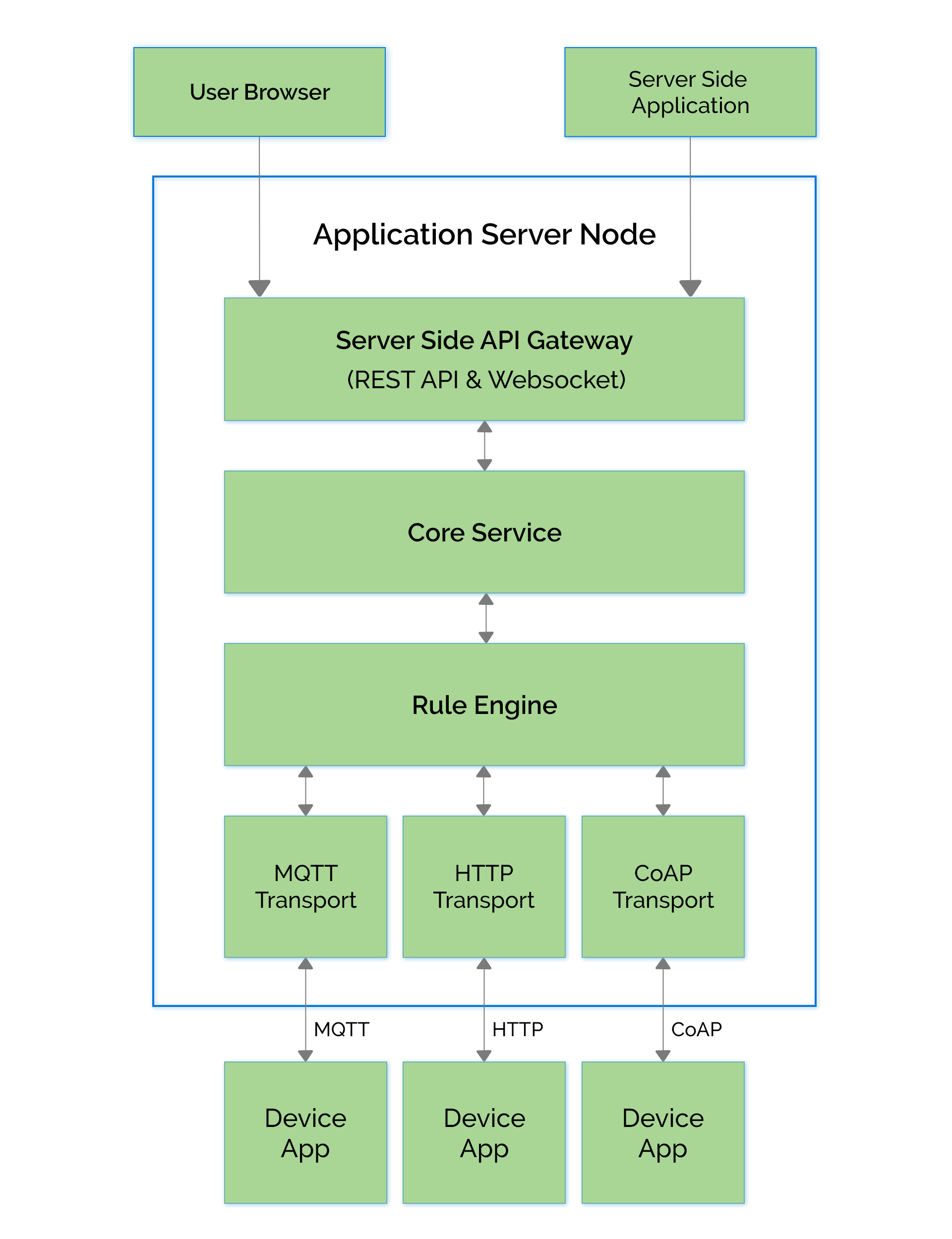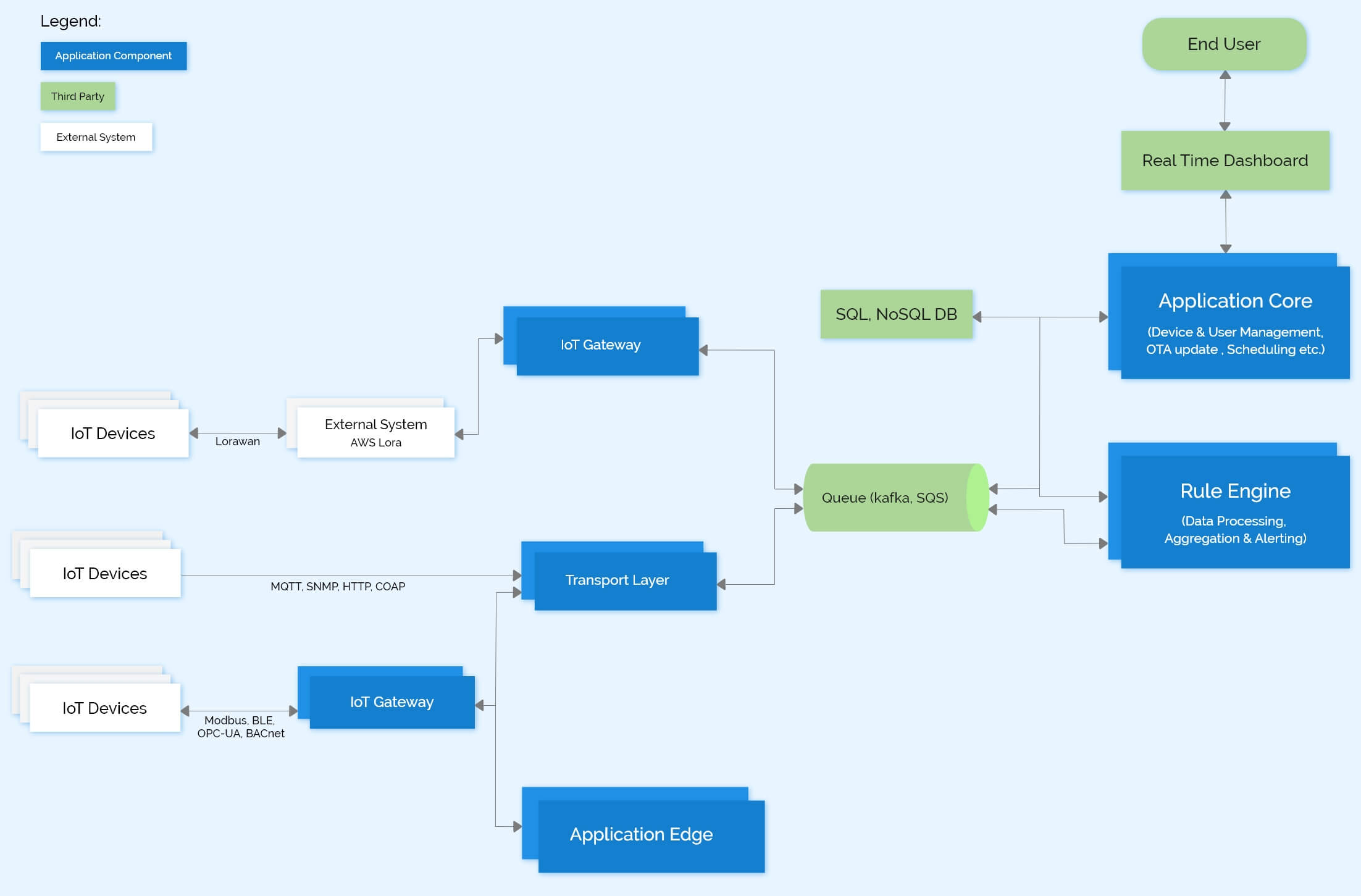Client Requirements
The client is a top-tier data centre company based in Australia, specializing in designing, building, owning, and operating data centres. We developed a comprehensive application to provide its customers with a consumer-friendly solution for efficient data centre management.
The application offers real-time data monitoring, analytics, and access control over data centre resources, empowering organizations to optimize energy usage, reduce costs, and enhance uptime and availability.
With this application, our client is committed to providing its customers with a seamless and efficient data centre management experience, delivering value and driving innovation in the industry.
Thinkitive Solution
We assembled a team comprising domain experts, IoT developers, backend developers, frontend developers, and QA specialists. The solution we developed is designed to be modular, flexible, and scalable. It offers a set of APIs for seamless integration with other systems and devices. It supports various IoT protocols such as MQTT, CoAP, HTTP, and LWM2M.
Our application provides a comprehensive solution for constructing and managing IoT applications, emphasizing user-friendly interfaces, adaptability, and scalability.
Device Connectivity:
The application lets users connect their devices using MQTT, LwM2M, CoAP, and HTTP protocols.
Rule Engine:
The application's Rule Engine enables users to process messages from their devices and trigger configurable processing modules called Plugins.
Core Services:
Our application encompasses a range of essential services that empower users to manage their devices and associated credentials effectively. Additionally, it enables seamless administration of rule chains and nodes, tenants and customers, as well as widgets and dashboards, providing a comprehensive solution for streamlined device and data management.
Alarms and Events:
Users can create device alarms using the Rule Engine, invoking a subset of the APIs.
Server-side API Gateway:
The server offers a REST API for registered users, encompassing various services. This includes the System Telemetry service, which allows users to manage attributes and retrieve time series data via WebSockets and REST API. Additionally, the System RPC service provides a REST API that facilitates the delivery of customized commands to devices.

Solution Highlights
-
Java- The application's core is primarily developed using Java, a widely adopted object-oriented programming language renowned for its proficiency in enterprise application development.
-
Spring Framework- The application uses the Spring Framework for building web applications and services. The Spring Framework provides a robust and modular approach to developing enterprise applications.
-
Angular- The application uses Angular, a TypeScript-based open-source web application framework, for building the user interface.
-
MQTT- The application supports the MQTT protocol, a lightweight messaging protocol for IoT devices.
-
Cassandra- The application uses the Apache Cassandra database for storing and managing large amounts of data. Cassandra is a distributed NoSQL database that provides scalability and high availability.
-
Docker- The application is packaged as Docker containers, which provides a convenient way to deploy and manage the application.
-
Kubernetes- The application can be deployed on Kubernetes, a container orchestration platform that provides scalability and high availability.
-
Device Gateway- Device gateway that allows users to connect devices that use different communication protocols to the platform. The gateway is crucial as a communication bridge between devices and the platform. It supports various protocols, including MQTT, Modbus, and OPC-UA.
Value Delivered
-
Device Management- The application allows users to manage their IoT devices easily. Users can register, manage, monitor their devices and configure their connectivity options.
-
Real-time Data Collection and Visualization- The platform seamlessly gathers real-time data from devices and offers customizable dashboards to visualize and analyze the collected data. Users can create custom widgets, charts, and graphs to monitor and analyze their data.
-
Rule Engine- The rule engine enables users to create complex rules and conditions to automate actions based on device data. This feature allows users to perform actions such as sending alerts and notifications or triggering other devices.
-
Device Integration- The platform is designed to integrate with third-party services, applications, and devices. It supports protocols like HTTP, MQTT, and CoAP to integrate with other IoT devices and services.
-
Device Telemetry- The application provides device telemetry data such as battery level, signal strength, location, etc. Users can monitor and track this data in real time and receive alerts when data values meet certain conditions.
-
Security-The platform provides end-to-end security for IoT solutions. It supports data encryption, access control, user authentication, and secure connectivity. Users can configure access permissions and assign roles and privileges to specific users or groups.
-
Multi-tenancy- The application allows users to create multiple tenants within a single deployment. Each tenant can have its own set of devices, dashboards, and users, and access permissions can be customized for each tenant.
-
Power Consumption Reporting- It allows users to monitor and report power consumption by individuals or groups of devices. The platform gathers real-time power usage, voltage, current, and power factor data from RAC PDUs (Remote Access Control Power Distribution Units). It efficiently stores this data for analysis and reporting purposes.
-
Access Control Management- The platform can receive data from sensors and access control devices that detect door openings and closings. It efficiently stores this data for analysis and reporting purposes.
-
Video Surveillance Monitoring- It allows end users to provide real-time monitoring and analysis of video data. Users can view live feeds from cameras and configure the platform to detect specific events, such as motion and face detection.
Technologies and tools
-
Devices: MQTT, LwM2M, CoAP, and HTTP protocols for device connectivity.
-
Frontend: Angular.
-
Backend: Java and the Spring Framework.
-
Database: PostgreSQL, Cassandra databases.
-
Tools: Docker containers, Apache Kafka.
Technical architecture Diagram

